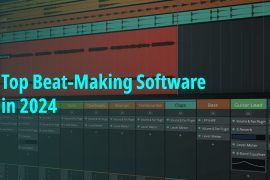
With the growth of electrical gadgets, the need for electrical contractors is expected to rise over the next decade. Electrical estimating is necessary for every sort of project, whether home or commercial. Most contractors or electrical engineers are familiar with electrical estimating and understand how difficult it can be at times, depending on the size of the job. This is where electrical estimating software comes into play.
However, with so many of these software options on the market, selecting the electrical estimating software that best suits your needs can be challenging. To relieve you of this stressful process, we at SaaSworthy have compiled a list of the 7 best electrical estimating software available in 2021.
Table of Contents
What is electrical estimating software?
Electrical estimating software is a type of cost estimator that calculates the anticipated costs of electrical projects. This software can give electrical contractors the ideal tools for producing consistent and accurate estimates. Electrical estimating software allows contractors to complete electrical estimates up to 70% quicker than traditional methods.
Besides electrical estimating, they include a plethora of secondary features like material databases, project management tools, quick bid summaries, dynamic takeoffs, and multi-user support.
7 best electrical estimating software to use in 2021
Here is a list of the 7 best electrical estimating software that are available for you to use in 2021.
1. STACK
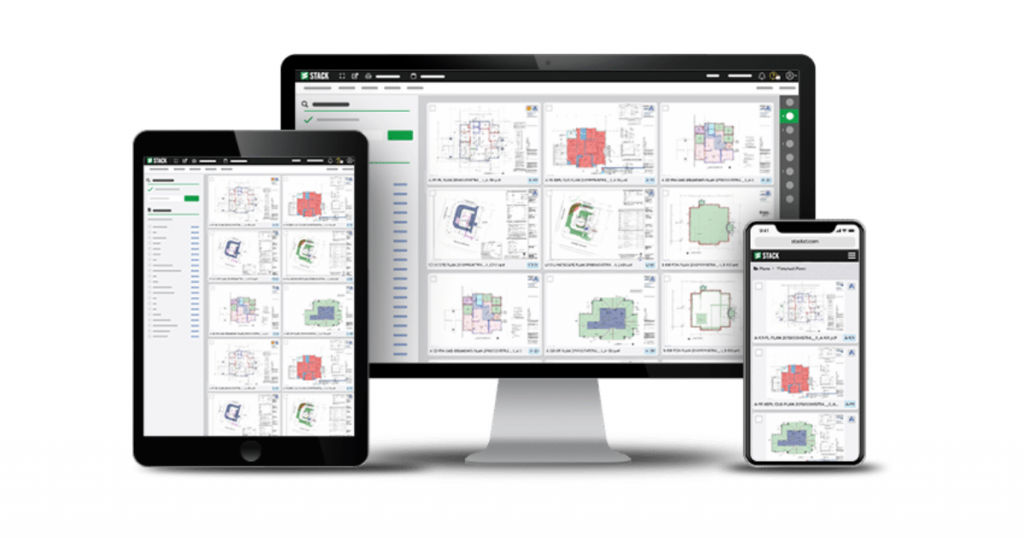
STACK is a cloud-based, free electrical estimating software and materials management software. Professional contractors of all sizes and trades can use this on-screen takeoff and estimating tool. A comprehensive suite of pre-built reports is supplied thereby providing the user with all the data and insights they want. It is intended for manufacturers, general contractors, suppliers, and subcontractors.
The various features of STACK include –
- You can quickly respond to bids and generate precise estimates so that you do not incur substantial losses. You can also use your corporate information to generate appealing bids.
- It uses the cloud to eliminate the need for paper and manual calculation techniques, resulting in less disruption.
- Users can reduce mistakes and earn new work by using features such as AutoCount, takeoff templates, and pre-built materials.
- It sorts project plans, specifications, and other information into a single hub in a secure manner. It speeds up the sorting process by allowing teams to rapidly discover details through easy searches.
The limitations of STACK are –
- It is not suitable for small contractors and needs a lot of improvements.
- The collaboration and sharing documents features have some bugs.
2. PlanSwift
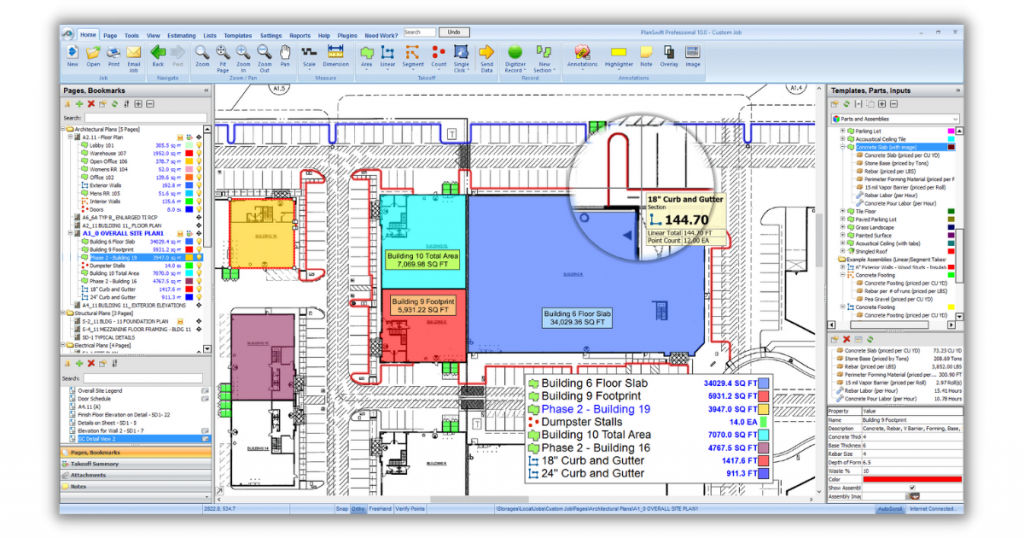
ConstructConnect’s PlanSwift is one of the best electrical estimating software that provides customizable estimating tools for general and specialist contractors. With point and click support, users can estimate basic and complicated areas, quantities, objects, perimeters, and lengths. They can also drag-and-drop assemblies to compute expenses such as labor costs, waste, and materials.
The various features of PlanSwift include –
- It allows you to build assemblies out of utilized materials and trash and then drag them to take off items for immediate cost estimates.
- It allows users to pick sections, parts, or items from digital blueprints. In seconds, you can take off basic or complicated regions, objects, lengths, volumes, and perimeters.
- It calculates the dimensions of selected sections or items on the design automatically, delivering linear measurements, areas, and volumes in real-time.
- You can calculate the material, waste, labor and then export estimates to Excel using the built-in reports. With drag-and-drop capabilities, it improves the accuracy of job estimate calculations.
The limitations of PlanSwift are –
- It has a steep learning curve that can be challenging for beginners.
- Loading big projects with a lot of jobs can be slow.
3. McCormick
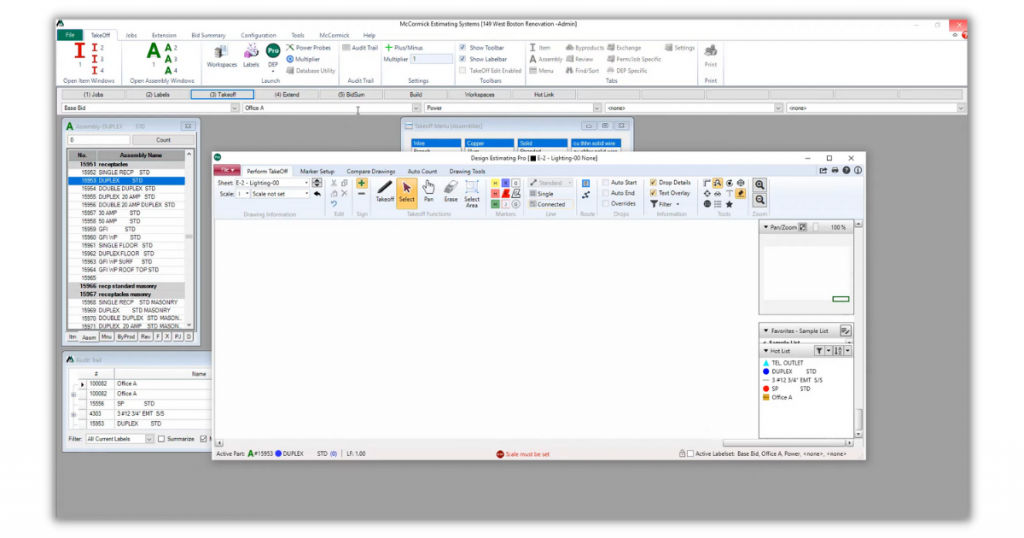
McCormick has been providing electrical estimating software since its establishment in 1979. McCormick estimating offers approximately 30,000 pre-built assemblies and 55,000 components to assist contractors in creating precise and thorough estimates.
It has multiple tiers, each of which serves a different group of contractors with Win 3000 for small contractors. Therefore, McCormick is the best electrical estimating software for small contractors.
The various features of McCormick include –
- It manages and updates bids based on estimated data to guarantee timely submissions and also provides analytics. It can carry out takeoff operations as planned and adjust objectives as required.
- You can create, update, and manage templates for various projects, as well as select from a variety of templates to accurately depict material values.
- You get rapid and precise estimates, PDF takeoffs, and design-builds to generate quick material lists and expert final bids.
- It gives accurate measurements as well as estimated material and labor expenses to help you remain on track with your schedule.
The limitations of McCormick are –
- Some electrical materials may not be uploaded to the system.
- There are some occasional crashes and bugs when a new version is released.
4. Methvin
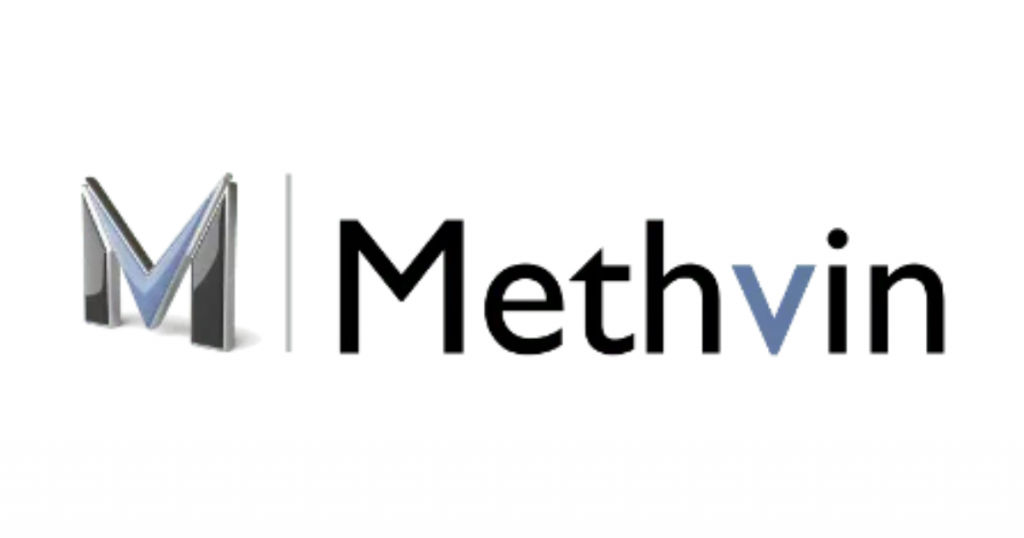
Methvin is a cloud-based and free electrical estimating software designed for builders, contractors, and project managers. It includes a number of modules that help construction professionals with their day-to-day work. Users can produce cost estimates, distribute estimates electronically, and manage projects using important features such as the estimating tool, takeoff tool, and project management tool.
The various features of Methvin include –
- You can efficiently generate cost estimates and win bids. To perform correct pricing, you can connect spreadsheets to numerous jobs and split them appropriately.
- You can use reporting to extract meaningful insights and utilize metrics to plan daily chores to boost productivity.
- You can keep track of necessary supplies and manpower, as well as monitor project progress, and handle areas that require improvement to execute projects successfully.
- You can use custom templates to quickly create designs and send dimensions. You can add notes and highlight places that have been changed or updated with color-coding.
The limitations of Methvin are –
- Some features may not work up to their full potential as they are still under development.
- Measurement editing is difficult as it erases the whole measuring.
5. Sage Estimating
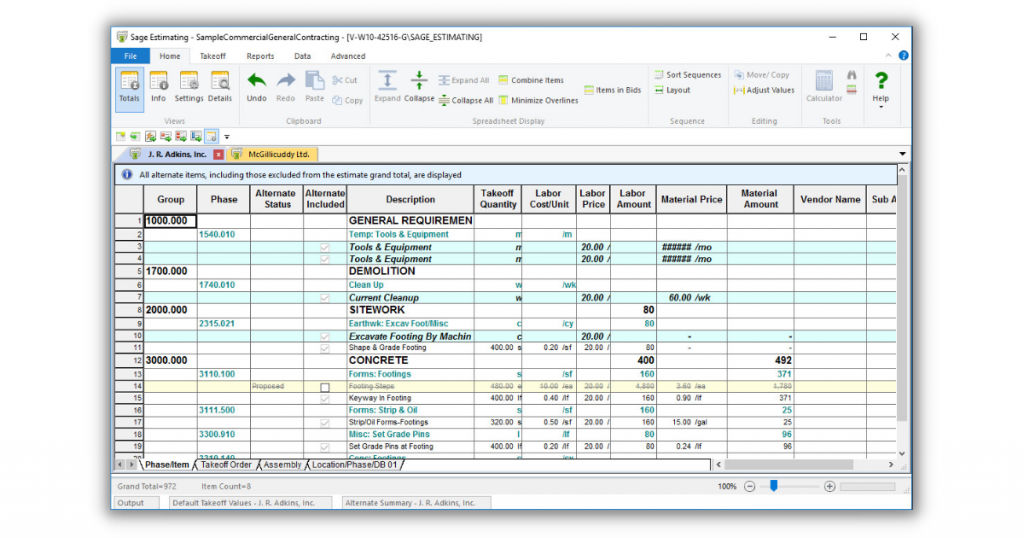
Sage Estimating assists estimators in predicting labor, materials, and other overhead expenses, allowing them to produce exact, accurate bids, thereby increasing the bid-winning ratios. It is available as a cloud-based software as well as an on-premise software. It has features such as electronic takeoff, task pricing, cost database project scheduling, etc.
The various features of Sage Estimating include –
- You can generate project proposals, comparative studies, and work cost analyses. You can professionally organize data by utilizing colors, fonts, and images.
- To get reliable estimates, you can calculate numbers from electronic blueprints. You can update estimates automatically while altering drawings and, by using multi-user capabilities, allow numerous estimators to collaborate on the same project.
- To manage and monitor project progress, you can integrate with Sage 300. You can also keep track of subcontractors’ and general contractors’ expenditures.
- You can integrate with Microsoft SQL Server to securely store data and access trade-specific databases to add cost elements into bid spreadsheets.
The limitations of Sage Estimating are –
- It does not provide you an option to undo your work.
- The setup process can be time-consuming due to the heavy user interface.
6. Esticom
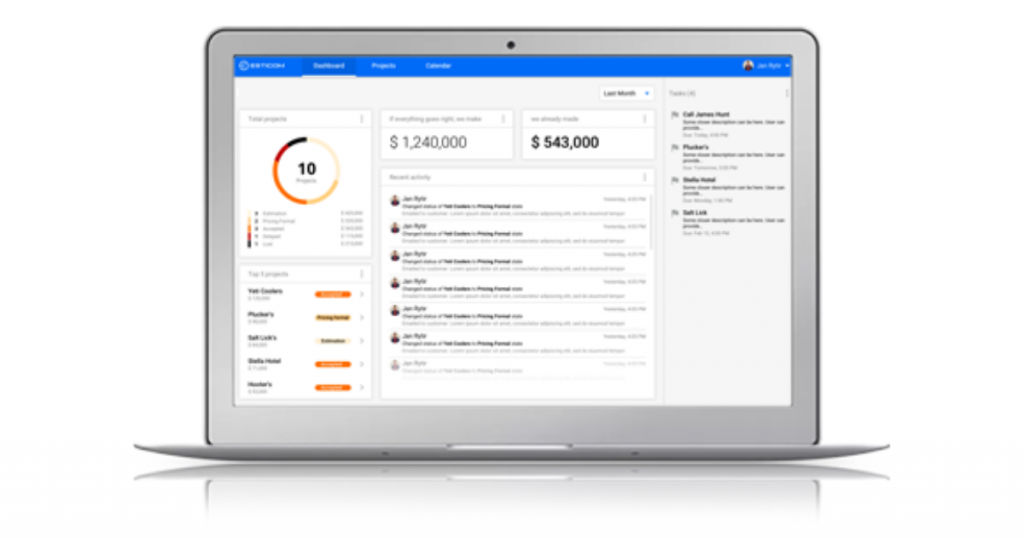
Esticom is a cloud-based construction takeoff and estimating software that provides contractors with real-time access to labor, pricing, drawings, and a material database to assist them in managing construction projects. Esticom is one of the best electrical estimating software that also serves industries such as plumbing, fire safety, structured cabling, security, and HVAC.
The various features of Esticom include –
- It features an easily configurable database containing out-of-the-box components and assemblies, including labor units and material costs.
- You can automatically measure conduits, wire runs, and add fittings. It provides project templates to help you bid on more projects while also streamlining the takeoff and estimating processes.
- You can personalize bid proposals by including your company logo, inclusions, exclusions, and precise pricing. It enables users to keep track of deadlines by cataloging projects based on the bid due date, estimate, or project amount.
- It eliminates the need for time-consuming Excel spreadsheets and generates precise electrical cost estimates on the web-based system.
The limitations of Esticom are –
- This electrical estimating software cost is much higher than other similar software.
- You cannot set a separate percentage margin for labor per line item.
7. Clear Estimates
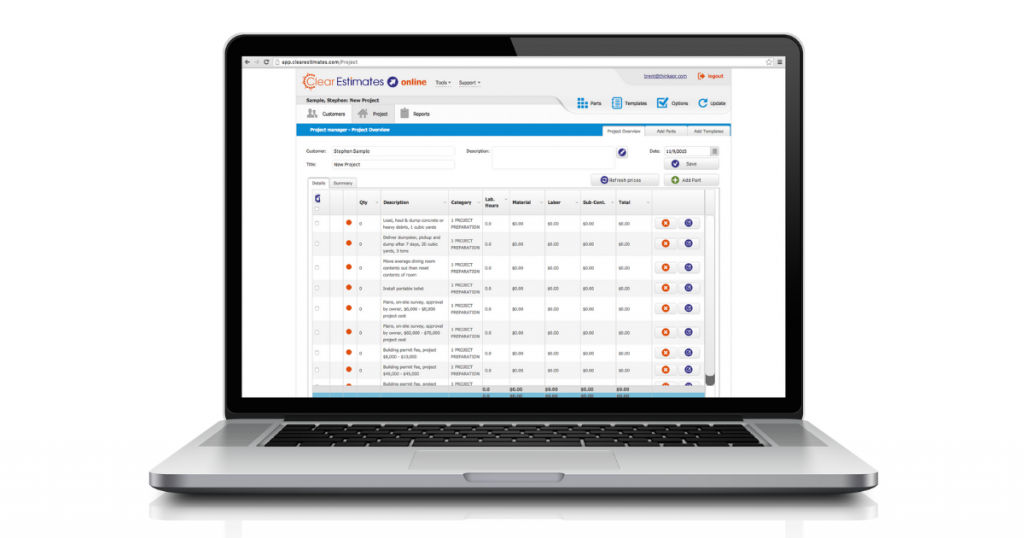
Clear Estimates is a cloud-based estimating software developed for contractors and remodelers. It allows you to add clients, materials and generate reports to aid in the creation of estimates, bids, and other documents. It also has 15,000 preloaded items with labor and material prices. It has submitted more than 17 billion bids and generated over 30,000 projects.
The various features of Clear Estimates include –
- To speed up estimate procedures, you can remove unnecessary parts, modify price data or add more components to the tasks.
- You can leverage cost databases to generate accurate estimates, and you can reuse data from prior estimates to save time. To ensure financial stability, you can add alternate pricing to projects.
- You can create formal proposals automatically by importing sections from databases that have already been written in contract language.
- Quickbooks allows you to import sales and receipt data. Using Zapier, you can send customer data to current CRM systems and export estimates to Buildertrend.
The limitations of Clear Estimates are –
- The procedure for adding sales tax to a proposal is quite complex.
- The search process is time-consuming, and some of the templates and components are difficult to locate.
Conclusion
We hope that we were able to throw some light on the various electrical estimating software available in the market. We also hope that by writing this article, we were able to simplify your process of selecting the best electrical estimating software. Weigh the pros and cons before making an informed decision while choosing the electrical estimating software best suited to your needs.
If you would like to read more such detailed articles, check out SaaSworthy blog.
Also read:
• Top 9 Construction Management Software in 2021
• Top 7 Free and Open-Source Floor Plan Software to Use in 2021

